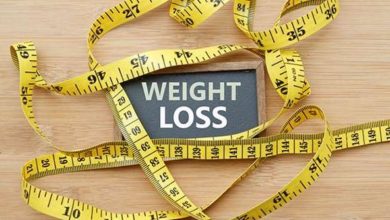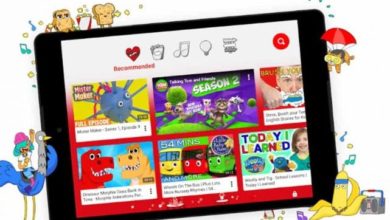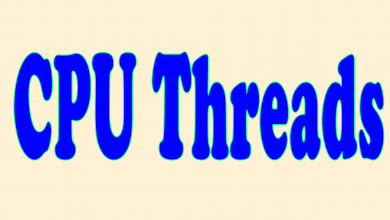Difference Between Data and Information
Table of Contents
Most of us may say to ourselves that Data is no different from Information, but I must say that it’s wrong. Read this article to know the difference between data and information.
The difference between data and information is that Data is a collection of facts, figures, or instructions that can be interpreted or processed to gain information by a computer or human. Information is the interpreted or processed form of data that can be used for decision-making.
What is Data In Computer?
Data are often any sort of character including text, numbers, words, sound, and image. Data is usually raw, uncategorized, and unclassified, and can generally be not trusted if we would like to use it directly. The data input raw counts and has no existence except in itself, but becomes significant post-processing and sorting the output.
Data Example
Look at the table below. You see a set of digits that do not convey any particular meaning to us. These are called data. Data is one or more characters (numbers, letters, and symbols) that have no particular meaning to us.
| 1 | 50 |
| 2 | 300 |
| 3 | 150 |
Types Of Data
- Qualitative Data
- Quantitative Data
Qualitative Data
Qualitative Data can be Non-Numerical Data & Used to Classify or Categorize Something
Examples
Frothy appearance, powerful taste, blue cup, etc., or A box of shirts with categories like small, medium, and large.
Quantitative Data
This data is used for Pertaining to variety.
Examples
A cup of tea contains 10 ounces of drink. Can be served at 150 F and price $4.95.
Types of Quantitative Data
- Discrete Data
- Continuous Data
Discrete Data
Discrete data includes a count and involves whole numbers. For Example, The number of youngsters (or adults, or pets) in your family is discrete because you can’t have 4.5 kids or 1.24 pets.
Continuous Data
This data is often numerical data that will combat any value during a certain range like height or temperature. For example, students that spend their maximum time on social media have poor grades.
You can also use data to inform a story. For example, when telling the story of global climate change using data, we’d use global temperature patterns, cycles, and greenhouse gases.
Sources to Collect Data
Data can be collected by two major sources: Primary and Secondary Sources
Primary Sources
Through this source, data is collected by researchers like interviews, observation, case studies, and questionnaires.
Secondary Sources
Secondary Sources are that data which already exist like official statistics, web information, government reports, and former research.
What Is Information In Computer?
A well-analyzed, arranged, and also processed form of data that has some meaning is called information. It is a meaningful, interpreted, and processed form of data that is used for decision-making. The average score of a class or school is an example of information.
Information Example
Now we add a new row to the previous table that shows what each of these digits means. Looking at the table, we understand that the patient with code 2 has a blood lipid of 350 mg, this is information. When data is placed in a specific context and becomes meaningful, it is called information.
| Patient Code | Blood Fat (mg) |
| 1 | 50 |
| 2 | 300 |
| 3 | 150 |
What Is The Difference Between Data and Information?
Information is “knowledge delivered or received related to some specific reality or situation”. Furthermore, it consists of a well-arranged sequence of symbols/signs that can be evaluated to provide insight facts about a particular matter. The average score of a class or school is an example of information.
Data consists of statistics, letters, or a set of alphabets. Most data is collected by means of measurement. When data is processed or computed, it can be represented in the form of structure. This structure may be a table, data tree, or graph. Each student’s test score in the class is an example of data.
Basically, the data itself has not enough importance. Until it is not evaluated to get the required meanings or information. Here I write the major points that differentiate the data and information more specifically.
Difference Between Data and Information In Table Form
Data |
Information |
| Data is an unsystematic, unorganized and unrelated entity. | Information is systematized, accurate and understandable. |
| Data is considered as raw input. | Information is the result of data processing. |
| Data is a set that represents the quantitative & qualitative properties of different variables. | Information is a concept that can be manipulated in various fields. |
| Derived from the Latin word “Datum” means something given. | Derived from the French verb “informare” means to inform. |
| Data can be in form of facts, analysis, or statistics. | Information can be in the form of mental stimulus, perception, presentation, knowledge, and even instruction. |
| Measurements units of data are Bits, Nibble, Byte, KB, MB, GB, TB, PT, EB, ZB, YT. | It comes the second level of intelligence hierarchy. |
| Data deteriorates with the passage of time. | Information is critical in sense. |
| Data may be consist of letters, digits or single words & even images. | Information is a well-arranged sequence of letters and digits that of some meanings. |
| Data is at the lowest level of a series. | information is at the next level of the series. |
| Data is obtained as a result of recording events or observations. | Information is obtained through analysis, communication, or research. |
| Data itself has no meaning. | The information must contain knowledge. |
| Data is independent. | Information is dependent. |
| Data is the raw facts that have not been analyzed and processed. | Information is the knowledge produced after processing. |
| Data does not consist of specific facts and figures. | Information is specific about some topic or subject. |
| Computer considered data as input. | Information is the result/ output of the data being processed. |
Difference between data and information and knowledge
Data
Look at the table below. You see a group of digits that don’t convey any particular aiming to us; These are called data. Data is one or more characters (numbers, letters, and symbols) that haven’t any particular aim to us.
| 1 | 150 |
| 2 | 350 |
| 3 | 200 |
Information
Now we add a replacement row to the previous table that shows what each of those digits means. watching the table, we understand that the patient with code 2 features a blood lipid of 350 mg. this is often information.
| Patient Code | Blood Fat (mg) |
| 1 | 150 |
| 2 | 350 |
| 3 | 200 |
When data is placed during a specific context and becomes meaningful, it’s called information.
Knowledge
Now suppose a doctor looks at this information and, supporting his or her previous learning and knowledge, says that a patient with code 2 has higher blood lipids than normal, which may increase the patient’s risk of attack. this is called Knowledge.
As a result, when information is combined with people’s mental preconceptions and experiences, we call that knowledge.
Wisdom
Now, if the doctor, after diagnosing hyperlipidemia, gives a special diet to regulate and reduce the patient’s hyperlipidemia, he has used his wisdom.
In fact, wisdom is the application of data in the right direction.
Do You Know The Difference Between:
- Intranet Vs Extranet
- C and C ++
- Analog Vs Digital Computer
- American And French Manicure
- Genital Warts And Pimples


